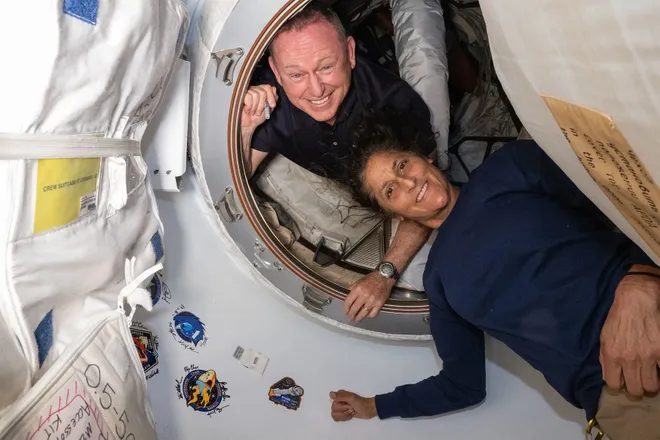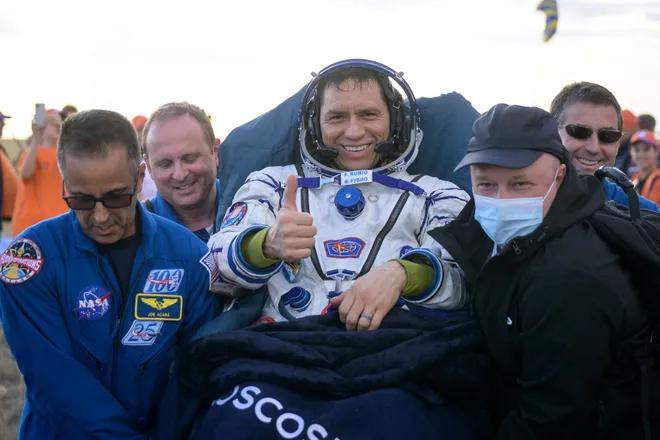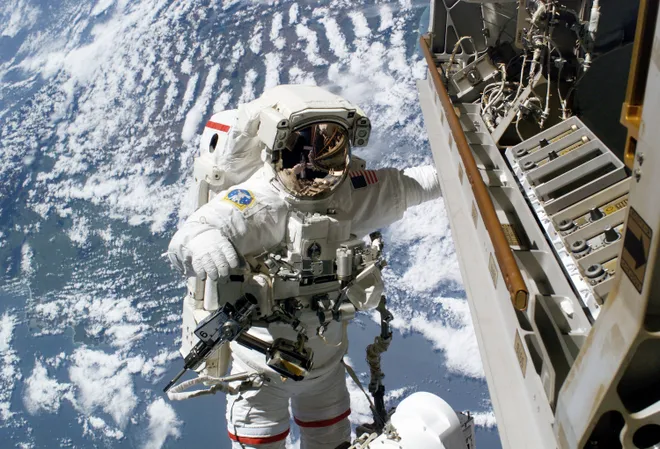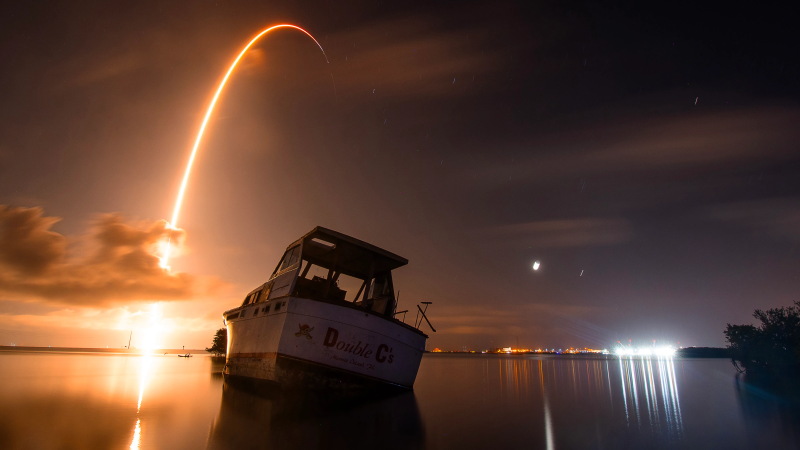Starliner astronauts aren't 1st 'stuck' in space: Frank Rubio's delayed return set record
- The veteran NASA astronauts aren't the first to experience an extended stay at the space station. In September, Frank Rubio made history as the American with the most consecutive days spent in orbit.
- Rubio's return home was also delayed due to an issue with the Soyuz craft that brought him to the station. His six-month mission was ultimately extended to 371 days.
- Most stays aboard the International Space Station don't last so long. Astronauts usually only are gone for about 6 months.
Whether they're "stranded," "stuck" or simply enjoying an extended stay in orbit, one thing is certain: Butch Wilmore and Suni Williams have been in space for much, much longer than they were supposed to be.
When the two NASA astronauts arrived June 6 at the International Space Station, they thought they had merely a week or so ahead of them before they would return to Earth on the Boeing Starliner that brought them there.
But that was more than two months ago. And not only are Wilmore and Williams still on the space station, but it may not be until next year that they return.
NASA announced Wednesday that if the troubles ailing the beleaguered Starliner capsule – built with the intention of running crews and deliveries regularly to the station – are not remedied to satisfaction, its two-person crew may instead come home in February aboard a SpaceX Dragon.
If it comes to that, Wilmore and Williams are perfectly safe and capable of hanging out in orbit for the long-haul, NASA officials assured reporters during a Wednesday news conference. In fact, such lengthy stays are not only common on the space station, but the pair of astronauts would hardly be the first whose scheduled return date to Earth was postponed.
Here's what to know about at least one other astronaut whose stay aboard the International Space Station was significantly lengthened, and how long the orbital stints typically last.

Starliner timeline:2 months after Starliner launched, astronauts still haven’t returned
What other astronauts have been 'stuck' in space?
Astronaut Frank Rubio made history in September when his 371 days in orbit made him the American with the record for the longest spaceflight.

But it was a record that Rubio, then-47, never expected to break when he and two cosmonauts launched Sept. 21, 2022 from a site in Kazakhstan. Rather, Rubio and crew thought they'd return to Earth the following March after just six months.
And the culprit behind the crew's unanticipated extended stay? Just like for the Starliner crew, it was trouble with same capsule meant to ferry them back to Earth.
When the Russian Soyuz capsule sprang a coolant leak in 2022 after it was pierced by a piece of space junk, a new spacecraft was rushed to the orbital outpost so the stranded spacefarers could make it back to Earth. Rubio's time in space came to an end Sept. 27 when the Army doctor and helicopter pilot landed with the Russians in a remote area of Kazakhstan in the replacement Soyuz that had only reached them two weeks prior.
On the plus side, the unanticipated stay helped Rubio etch his name in the record books as the American with the most consecutive days spent in space. Rubio, a Salvadorian-American born in Los Angeles, surpassed by more than two weeks the previous 355-day American endurance record set in 2022 by astronaut Mark Vande Hei.
All told, Rubio and his fellow crewmembers logged more than 157 million miles and orbited Earth 5,963 times, NASA said.
How long do astronauts stay on the International Space Station?

Most stays aboard the International Space Station don't last quite so long.
Astronauts with missions aboard the space station are generally gone for about six months, making Rubio's year-plus in space a notable exception, according to NASA's Jet Propulsion Laboratory.
Designed and operated thanks to a global partnership of space agencies, the International Space Station has been home to crews of astronauts, cosmonauts and plenty of others since November 2000, NASA says. While there, the spacefarers spend their time conducting a variety of scientific experiments while doing work to maintain and improve the station's operations.
As of now, the Starliner astronauts are living among the seven members of Expedition 71 who arrived in April.
Of those in Expedition 71, four are part of the SpaceX Crew-8 mission that was slated to depart the station in August after six months in orbit. Because of the troubles the Starliner has faced, those four spacefarers will have to be in space about a month longer than intended while NASA and Boeing figure out the size of the Crew-9 mission that will replace them.

What happened with Boeing Starliner?
Whether four astronauts or two astronauts head up to the International Space Station for the six-month Crew-9 rotation depends on what happens with Starliner.
After several delays over the course of about a month, the Boeing Starliner finally launched June 5 atop an Atlas V rocket.
The mission marked the first crewed demonstration of the spacecraft, which is intended to be approved to make routine trips to space on behalf of NASA. The partnership marks a shift in recent years for the U.S. space agency, which has pivoted to paying private companies for missions it once would carry out itself as a way to cut costs.

Certifying the Starliner for such missions would provide NASA with a second operational spacecraft to carry astronauts and cargo to the space station after it shelled out billions of dollars to both Boeing and SpaceX to develop the vehicles.
But Boeing has lagged behind SpaceX, which has already begun reliably transporting astronauts and supplies since 2020 to the space station aboard its Dragon. Hopes were high that a successful Starliner launch – its first demonstration with a crew aboard – would get Boeing on track.
Wilmore and Williams were only slated to spend a little less than a week at the International Space Station before returning for a parachute-assisted landing in the Starliner. However, once the Starliner docked at the space station, engineers discovered a slew of helium leaks and problems with the craft's propulsion system that hampered its return to Earth.
Now, NASA is considering a plan to undock the Starliner without its crew aboard to make way for the since-delayed SpaceX Crew-9 to arrive in September. If that were to happen, only two Crew-9 astronauts would then arrive to relieve the Crew-8 astronauts, who have been at the space station since March.
That way, Wilmore and Williams would have room to hitch a ride home on Feb. 25 on the Dragon once the Crew-9 team completes its shift.
NASA officials could not say for certain Wednesday whether Starliner could still be certified for crewed rotation missions if the capsule returns without its crew.
Eric Lagatta covers breaking and trending news for USA TODAY. Reach him at elagatta@gannett.com
Disclaimer: The copyright of this article belongs to the original author. Reposting this article is solely for the purpose of information dissemination and does not constitute any investment advice. If there is any infringement, please contact us immediately. We will make corrections or deletions as necessary. Thank you.






